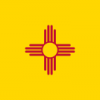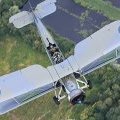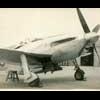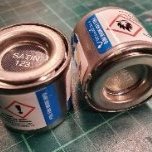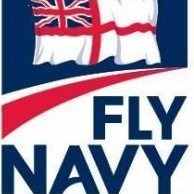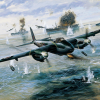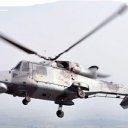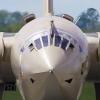-
Posts
1,255 -
Joined
-
Last visited
-
Days Won
1
iang last won the day on September 19 2012
iang had the most liked content!
About iang

Profile Information
-
Gender
Male
-
Location
Brighton
Recent Profile Visitors
5,991 profile views
iang's Achievements

Very Obsessed Member (5/9)
1.9k
Reputation
-
possible 806 Rocs May 1940: L3065 4/40 L3075:L6R L3103 2/40 (under repair 5/40) L3105:L6R L3106 4/40 L3118 4-5/40 (coded O later with 759 Sq) L3154 3/40 (coded W at some point) L3156 3-5/40 (though recorded with 806 before 29/5). I may have missed others. Several of these only have recorded service history with 806 before 5/40, though that doesn't mean they definitely were not with 806 in late May. Two were coded R, so probably not those. If I was guessing from this list, I'd go with L3118.
-
I've a copy of the Operational Records Book for 806 Squadron while at Detling. The combat with five Ju88s on 29 May was with Skuas/Roc 806:C, Q, M. The Roc is not identified, but the usual practice in mixed Skua/Roc squadrons was for the Roc flight to be coded as the 4th flight (P, Q, R), so I'm pretty confident that Day/Newton would have been in Q. The separate Admiralty Report on the action, lists them as being part of Yellow section, which is not inconsistent with Q being the Roc. What I have been unable to find is Day/Newton's Combat Report for 29 May. I have the Combat Reports for 806 Skua operations attacking Bergen in the middle of May and these give all the serials for Blue and Red section Skuas, so if the Combat Report for 29 May can be located, it will almost certainly record the serial. Rocs weren't used in the Bergen attacks because of their more limited range. I have photographs of 806:6F and 806:6C while at Detling. 806:6Q would almost certainly have been marked in the same way. The camouflage was S1E with high straight demarcation. Codes were 6x arranged vertically over a narrow 3/4 height fin flash. The fin flash consisted of narrow blue and red sections with a wider white section (about 1.5x the blue or red sections). There was a small Sky-Grey gap between the rudder post and the fin flash and a small triangle of Sky-Grey rudder visible in front of the red section and above the top of the flash. The codes look to have been narrowly outlined in white. This code arrangement is different from the common photos of 806 Roc coded L6R vertically on the fin with no flash, and from the codes applied to 806 when they joined Illustrious (single letters on the fuselage). I think the arrangement I describe is unique to the period at Detling, after fin flash and yellow concentric to the fuselage roundel was mandated. HTH
-
For those who prefer their Floatfish camouflaged, this is supposedly L9767 camouflaged at Aboukir in 1941/2. By this stage the aircraft in the photograph was named "Diana". However, the serial is not legible so this could be fanciful. I don't tend to trust the ID unlike I can read the serial: Swordfish on Warspite were allocated codes C8A and C8B. This is one of two original photos I own of C8C in the Mediterranean. I think this is K8363 from HMS Valiant, with the full code repeated under the mainplane (The serial is 90% legible in the other photo): When Warspite's Floatfish were eventually camouflaged, the full C8A and C8B codes do not appear to have been carried - only the letter A, and presumably B, on the fin, repeated under the mainplane. (I don't have a photo of B in this series - maybe "B" was the camera plane): Warspite was allocated two Floatfish at this time - L9767 and K8864. C8A should have been K8864 linked to above in silver dope, but in high resolution the serial in this photo of "A" looks more like L9767 to me. Moreover, K8864 did not have red warning strips on the floats whereas L9767 did..... Of course, the camouflage looks nothing like the Aboukir photo.
-
Indeed. As an example, I have a photo of Enterprise at Trincomalee in 1942 with Seafox embarked, still in silver dope - 3 years after the Admiralty issued the first instruction to camouflage FAA aircraft.
-
They are all in my book😀
-
Difficult to argue that the aircraft in IWM A36 and A45 are in silver dope (unless A45 shows shadow rather than camouflage). However, HMS Furious had a striking force of 10 Swordfish over Narvik on 13 April, bombing and then circling the combat zone for 90 minutes (two were shot down). Furious' Swordfish were most definitely camouflaged.
-
There is a slightly better reproduction of the damaged tailplane photo in Haarr's The German invasion of Norway p.367. Just on the basis of this one photo the Swordfish is unambiguously in silver dope. The whole series (which I've seen) are at TNA. Moreover, when Warspite arrived in the Mediterranean, her Swordfish were still uncamouflaged and remained so for some time - possibly well into 1941. I have a clear photo of another of Warspite's Swordfish - K8864 - in Alexandria harbour in silver dope with full width fin flash and yellow concentric to the fuselage roundel (added in May 1940), but still no code or camouflage. This aircraft can be seen here on shore: https://www.worldwarphotos.info/gallery/uk/raf/swordfish/swordfish-700-hms-warspite/ So for me at least there are no doubts about the finish of L9767 at the second battle of Narvik.
-
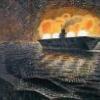
ICM 1/32 Gloster Gladiator MkII
iang replied to pacificmustang's topic in Ready for Inspection - Aircraft
Very nice Gladiator -
There are two photos taken from L9767 on 13th April 1940 in Harrison's The Swordfish at War p.22. These are two from a series of at least six. The Harrison photos are not the clearest of the series, but they show an uncamouflaged airframe.
-
I'll see if I can find the photos taken from L9767 that show the airframe
-
lovely build and finish
-
There's a clear photo in my book for Jan/Feb 1940, which is how the airframe appeared at the time of Narvik. Photos taken from L9767 during the Narvik operation show that the airframe was not camouflaged. The only doubt surrounds whether the code was applied between the earlier photo and Narvik. The balance of evidence suggests it was uncoded at this time and that codes were not applied until Warspite arrived in the Mediterranean.
-
Really nice!
-
I've the two AJ Press volumes on the K-Class cruisers and in one volume there is a set of inserted folded plans in 1/350 that shows Karlsruhe in 1939/40 with steel decks (plan and profile views). If you message me with an email address, I'll send you a copy.
-
This is another lockdown project that has been sitting on the Shelf of Doom for a few years. I'm hoping that starting a WiP will encourage me to make some progress with it. The first steps are the construction of the fuselage internals. This requires attaching each vertical former to the resin fuselage, having first removed them for a thin backing sheet and sanded each one down: This is a time consuming and fairly tedious job. After several hours, I've ended up with this, with the front decking and pilot's position and seat installed. I've left out quite a lot of the detail parts that will not be painted Interior Green, and will install those later when the interior of the fuselage has been painted: Obviously, the formers and bulkheads have to be adjusted so as to allow the fuselage halves to close. The large bulkhead separating the Observer's position and Wireless Operator's station demands a lot of fettling. I probably should have taken more off of the port side before fitting as the fuselage is hard to close to get a perfect join: I suspect with a little more sanding on the starboard side of the large bulkhead, the joint can be improved. This is where I got to by the end of lockdown. It's an impressive kit, with outstanding detail, but I suspect it is going to be a difficult and long-winded build.
- 1 reply
-
- 10
-



